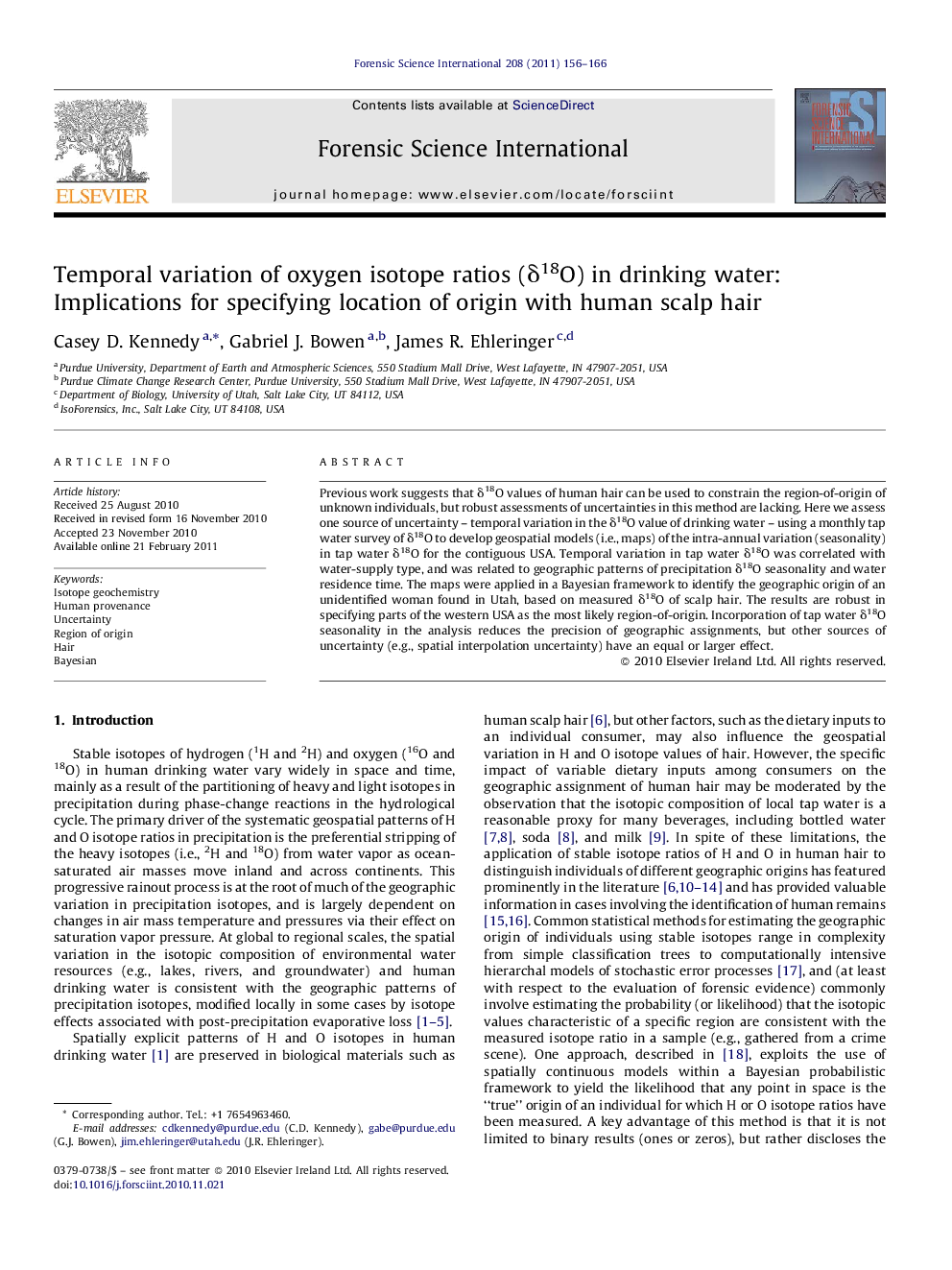| Article ID | Journal | Published Year | Pages | File Type |
|---|---|---|---|---|
| 96761 | Forensic Science International | 2011 | 11 Pages |
Previous work suggests that δ18O values of human hair can be used to constrain the region-of-origin of unknown individuals, but robust assessments of uncertainties in this method are lacking. Here we assess one source of uncertainty – temporal variation in the δ18O value of drinking water – using a monthly tap water survey of δ18O to develop geospatial models (i.e., maps) of the intra-annual variation (seasonality) in tap water δ18O for the contiguous USA. Temporal variation in tap water δ18O was correlated with water-supply type, and was related to geographic patterns of precipitation δ18O seasonality and water residence time. The maps were applied in a Bayesian framework to identify the geographic origin of an unidentified woman found in Utah, based on measured δ18O of scalp hair. The results are robust in specifying parts of the western USA as the most likely region-of-origin. Incorporation of tap water δ18O seasonality in the analysis reduces the precision of geographic assignments, but other sources of uncertainty (e.g., spatial interpolation uncertainty) have an equal or larger effect.
